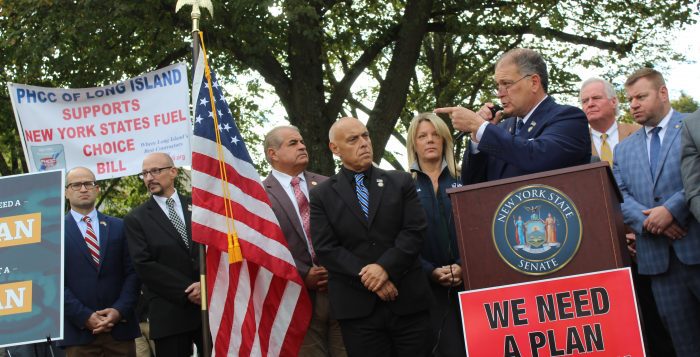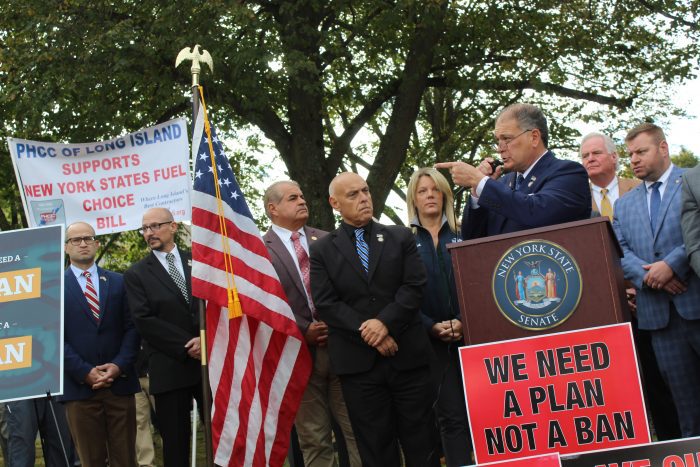By Aidan Johnson
Dozens of residents attended the Mount Sinai Civic Association meeting June 3 to voice their safety concerns over a potential new battery energy storage system facility locally.
The facility, proposed by New Leaf Energy, would have a 20-year lifespan, after which the site would need to be restored to its pre-project condition.
The proposed area is adjacent to Mount Sinai-Coram Road and Route 25A on property owned by real estate agent Ray Manzoni. However, because this property is zoned as transitional business, New Leaf Energy’s application proposes the zone be changed to light industrial.
Former county Legislator Sarah Anker (D-Mount Sinai), who has been a vocal critic of the proposal, and Brookhaven Town Supervisor Dan Panico (R) also attended. While speaking, Panico addressed misinformation on social media that incorrectly told Mount Sinai residents that “the people in either Holbrook or Holtsville fought the battery storage there, and what they’re not getting is coming to Mount Sinai.”
Anker voiced common worries that residents had about the storage system facility.
“We just want to understand that what is going to happen is safe,” Anker said. “I don’t have a problem with renewable energy. We need the battery storage, we’re going to need that, but it’s the location,” she added, calling the proposed site the “worst intersection probably in Suffolk County.”
“Multiple accidents have happened there, the school district is close by, the water authority has a well right there, there’s a recreational path. There’s so many reasons we don’t need to change commercial to industrial,” she said.
Civic President Brad Arrington also discussed how LIPA, which owns an empty parcel of land next to the substation, could theoretically put a battery facility there without any input from the town government due to being immune from the local zoning authority.
“They could put a battery facility there which would carry the same risk that people are concerned about today, the difference being that when LIPA puts that in, they do not have to provide any community benefit, which is what has been proposed with this property,” Arrington said.
New Leaf is proposing an initial upfront payment of $340,000 — $85,000 per battery installation — with the allocation of this money to the school district, fire department and more not yet determined. The company also originally reserved $500 per megawatt, for a total of $10,000 annually, but raised it to $12,000 with a 2% annual increase to cover the current property taxes going to the school district.
Residents expressed concerns about what would happen if there was a fire at the facility, inquiring about the chemicals that would be emitted into the air and ground and how it would affect the surrounding area, including the school district and homes.
However, Arrington said the proposed facility would have lithium iron phosphate batteries, which “have a lower energy density, but have a far reduced rate of thermal runaway,” as opposed to the lithium NMC batteries that, while much more energy dense, are more prone to spontaneously catch on fire.
He also explained that a chain reaction would not take place, meaning that if thermal runaway does happen, it would be isolated in its own compartmentalized container.
Additionally, since the battery would have to burn itself out instead of being put out with water by the fire department, Arrington said that according to New Leaf, there wouldn’t be runoff into the ground. Also contamination with the soil and the off-gassing would be extremely limited.
Panico did not answer whether or not he supported the project, instead saying that he would review the application and talk to his colleagues, including Councilwoman Jane Bonner (R-Rocky Point), who represents the area.
Arrington said the town board would not take a vote to approve the project without input from the civic, which will hold a meeting for the civic members to vote in October.
























